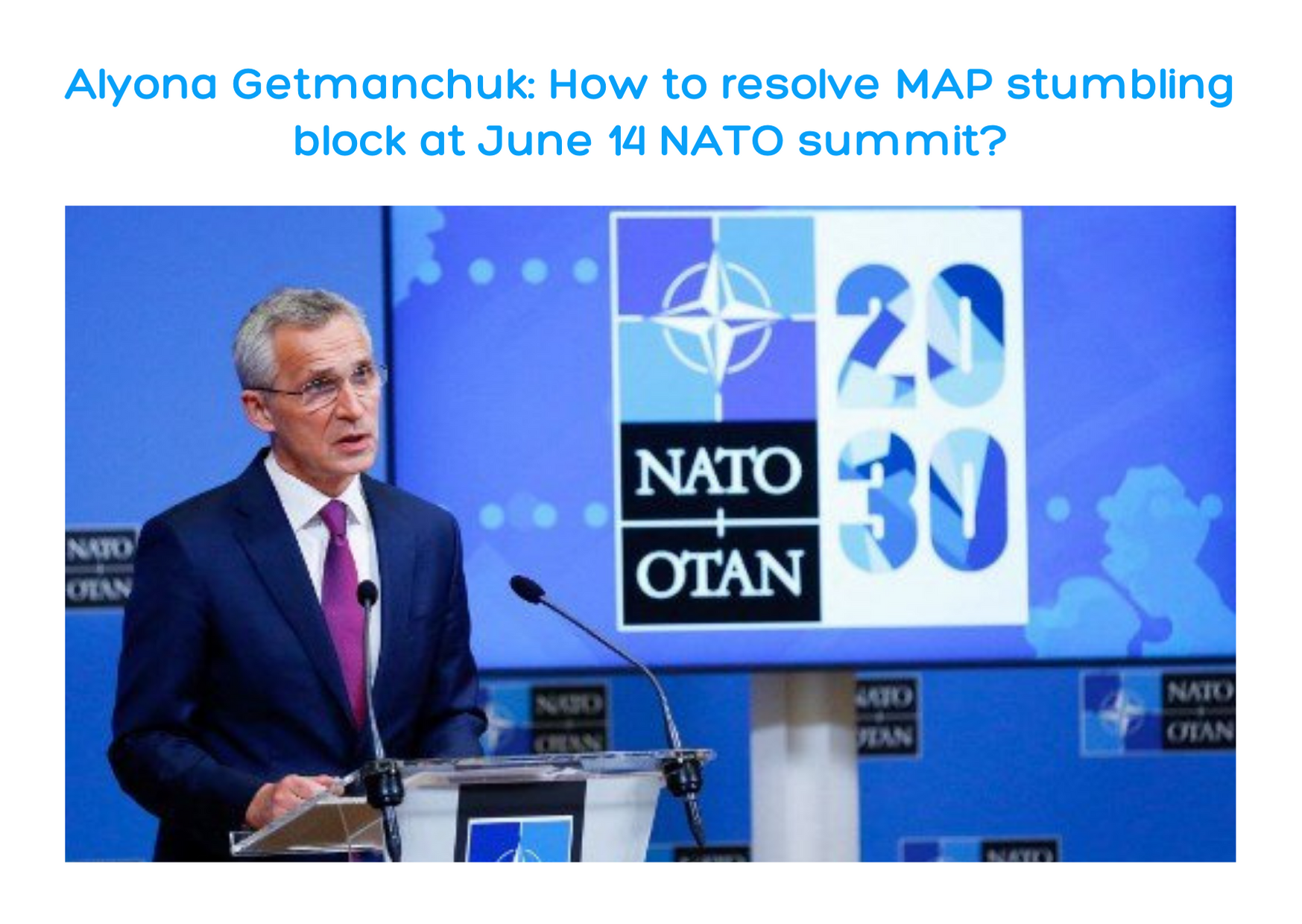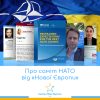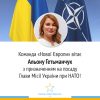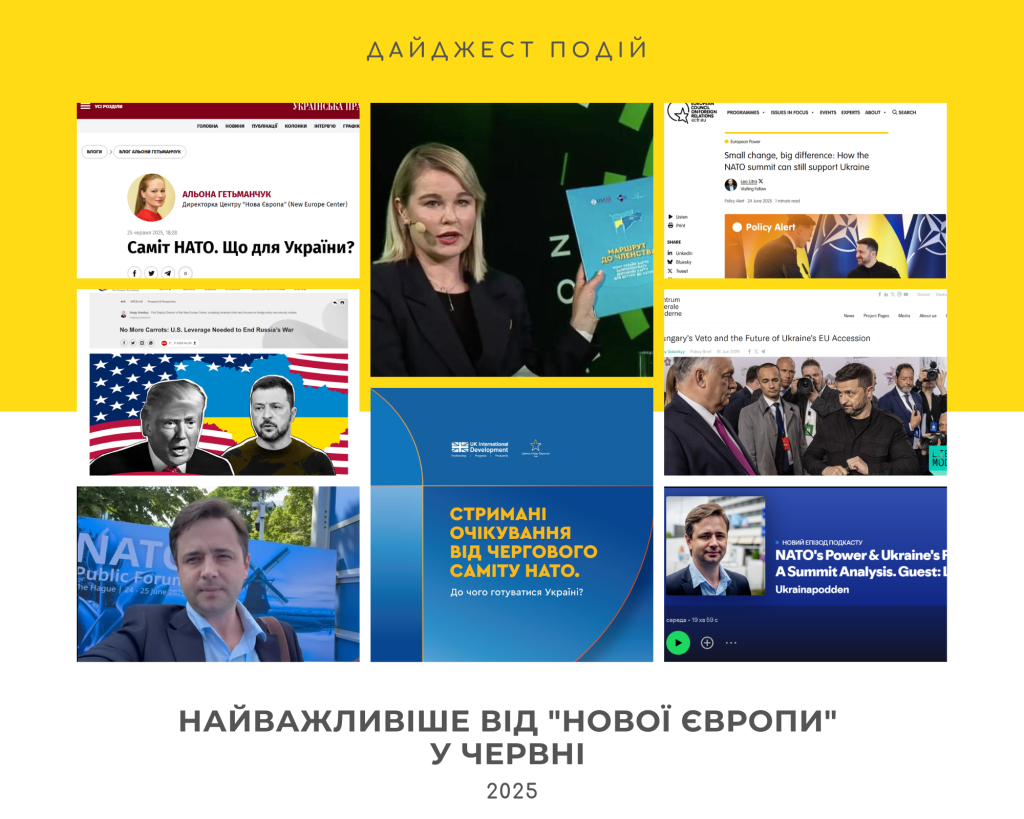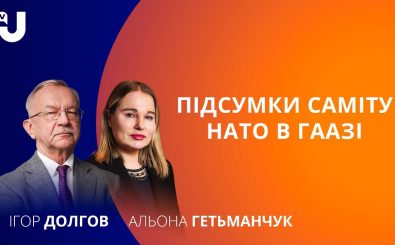Article by Aloyna Getmanchuk for the European Pravda (available in Ukrainian only). The paper was translated into English and published by Kyiv Post.
Many reproaches and even accusations in Ukraine will follow after the NATO summit in Brussels. The opposition will accuse the authorities of failing to get an invitation for Ukraine to the summit and of not receiving a clear signal regarding the Membership Action Plan. The authorities will blame NATO for almost the same. Civil society will accuse both the authorities and the opposition of excessive politicization of the topic and fueling unjustified expectations among Ukrainians. NATO will be blamed for its unwillingness to talk seriously about how to transfer the Alliance’s open door policy towards Ukraine and Georgia from paper into real life. Should it want, NATO could in its turn accuse Ukraine of bringing the issue of the MAP into public as always “at the wrong time” – Ukraine should have known that there was no consensus in the Alliance on this matter.
Mutual reproaches and accusations are the easiest way for Ukraine and NATO after the Brussels summit. However, it is also the worst way to go in terms of future relations. How could this be avoided? NATO could adopt a political declaration stating that Ukraine already has all practical tools to prepare for NATO membership. A similar statement was recently voiced by the U.S. Secretary of State Antony Blinken during the hearings at the Senate committee. Now it should be made at the Alliance level in the respective final declaration. In the future, the decision regarding Ukraine’s accession could be grounded on such a declaration, based on the implementation of the Annual National Programs (without any MAP). With regards to Georgia, a similar declaration that the country has all practical tools available for the preparation for the NATO membership was adopted at the Alliance Warsaw Summit in 2016.
Why could this become a good way out? NATO constantly emphasizes that reforms are the key to membership in the Alliance. Ukraine doesn’t mind. In fact, that is why it requested the Membership Action Plan, which provides for such a reform plan in various areas. However, NATO is not and obviously will not be ready to grant MAP to Ukraine in the coming years. Moreover, due to its toxicity and uniqueness of Ukraine’s and Georgia’s cases, it is doubtful that the MAP remains the most adequate preparatory tool for these countries.
In this case, Ukraine needs a different reform plan to prepare for the membership. We tentatively called it the NATO Compatibility Plan in the policy paper “The Route to Membership” presented by the “New Europe” Center at the “Democracy in Action: Zero Corruption Conference”. It would be a detailed roadmap for reforms that would not only prepare Ukraine for NATO membership, but also speed up the reform process in Ukraine, as the EU Visa Liberalization Action Plan once did.
Since NATO constantly appeals that Ukraine already has the Annual National Programs, why not officialize them as the route for membership? Why can’t they become an official “substitute to the MAP”? Moreover, when the MAP emerged as a tool back in 1999, the Annual National Programs were lying in its basis. Both documents still have a similar structure and contain the same sections. The Annual National Programs would need to be significantly strengthened in terms of both the content and level of monitoring from NATO’s side. After all, currently, it is impossible not only to implement them effectively but even to read them fully in the form and in the volume in which they exist today.
So, the main idea is that Ukraine should not only have a coherent reform plan but also get a clear political signal. Namely: the decision on the membership will be made on the basis of the implementation of this plan (let it be the Annual National Program). It is very important for us in Ukraine to understand where we are now in terms of reforms with regards to readiness to join NATO compared to other former candidates and two current aspirants (Georgia and Bosnia and Herzegovina). But it is even more important is to know what other reforms need to be conducted in order to join the Alliance as soon as respective preconditions for such a step appear. We are not talking about a specific timeframe, we are talking about Ukraine’s readiness at the time when the window of opportunities is open.
We are also well aware that reforms are only a partial answer regarding Ukraine’s future membership in NATO. The other part of the answer is a fear of Russia. Here we recommend starting a serious discussion on what are not only the risks of inviting Ukraine and Georgia to join the alliance but, more importantly, what are the risks of not inviting these countries to NATO. After all, in the case of Ukraine, the latter may mean even losing statehood. Moreover, we must always remember that Ukraine was attacked by Russia while being in official non-aligned status – not when it voiced any intention to join NATO.
This discussion can be developed and deepened after the summit. As of now, the declaration on availability of all practical tools for preparing for membership in the Alliance is much needed to be made in Brussels.



